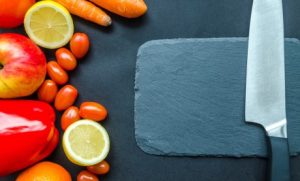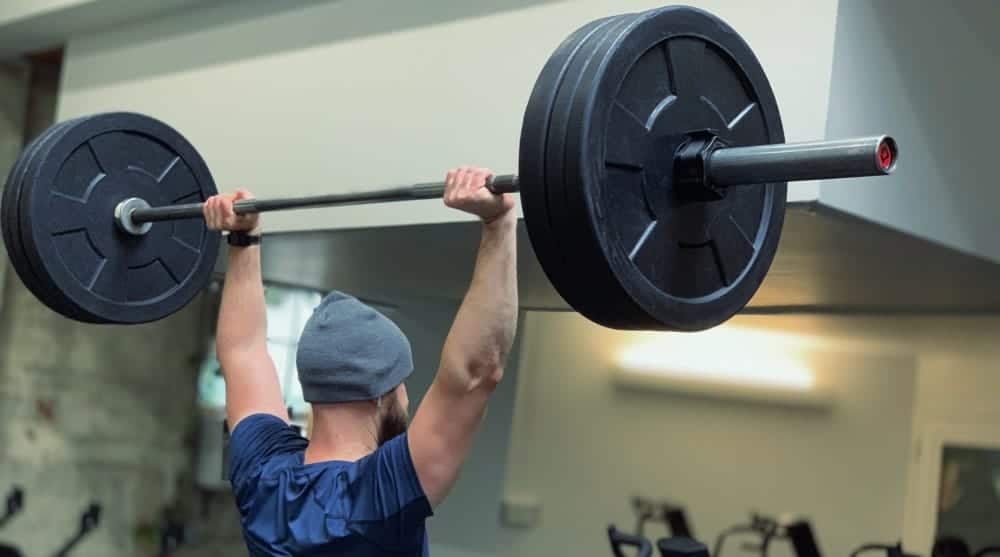
Choose your exercises wisely.
As the term exercise selection suggests, today’s article is about the exercise selection for muscle growth. More precisely, which exercise to choose to get the best results, ie the best possible muscle growth.
So after we already discussed the questions how much? (Volume) how difficult? (Intensity) how exhausting? (Workload) and how often? (Frequency), let’s take care of the specific exercises for your training programme.
First of all, we need to clarify the
I hope you realize that without muscles it would be impossible to move on Earth. Because without muscles, you’re not able to move your body against prevailing resistances (air resistance, gravity) and then would just fall to the ground.
Why on the ground?
Because gravity would pull you down and you could not hold anything against it. The only reason why your musculature is burdened is
In order to determine which exercise strains a certain muscle, we simply have to look at the specific movement and look up which muscles are mainly responsible for it.
For this reason, there is no such thing as a “magical exercise”.
As long as you find an exercise that involves the same anatomical movement, you’ll be burdening the same muscle equally well. So you should start thinking about movements rather than exercises.
The bench press thus represents a horizontal push exercise, while pull-ups embody a vertical pull exercise. Before we clarify the question of exercise selection, we first take care of the anatomical body functions so that the relevance of each exercise becomes clear.
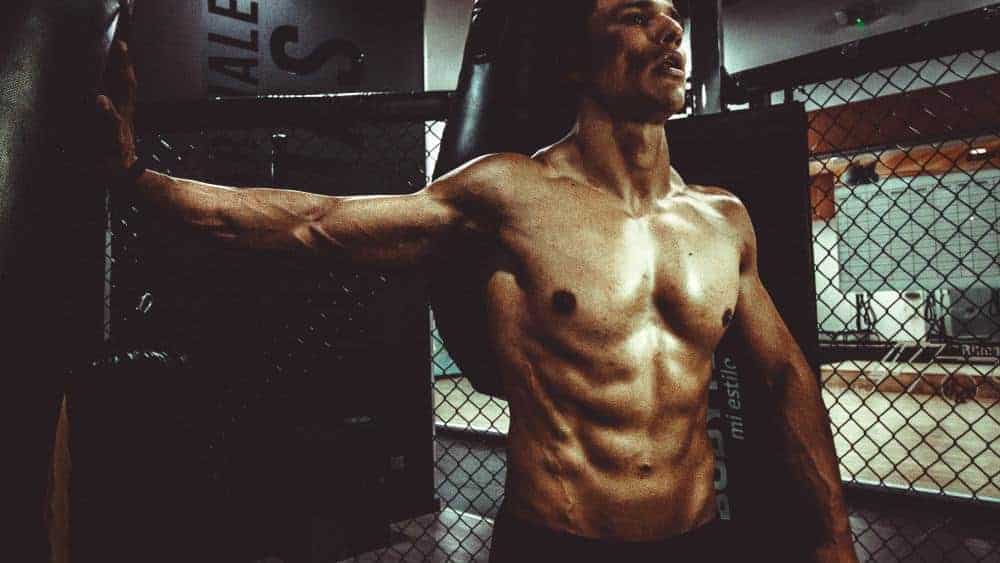
Body functions
In the following chapter, we will discuss the most important anatomical body functions of the individual major muscles.
Important: The list is not entirely outright, as some muscles have other minor functions or act as stabilizers. However, if you are looking for maximum muscle growth, you should focus more on the main functions, as this is the only way to really stress the muscle significantly.
In addition, we logically do not address all 650 muscles of the human
Lower body
| Muscle | Major muscle | Major function |
| Glutes | Gluteus Maximus Gluteus Medius | Hip extension Hip abduction External rotation Hip abduction Hip flexion |
| Hamstrings | Biceps Femoris Semitendinosus Semimembranosus | Hip extension Knee flexion |
| Quads | Rectus femoris Vastus lateralis Vastus medialis Vastus intermedialis | Plantar flexion + Hip flexion Plantar flexion |
| Calves | Gastracnemius Soleus | Plantar flexion Knee flexion Plantar flexion |
| Shinbone | Tibialis Anterior | Dorsal flexion |
Upper body
| Muscle | Major muscle | Major function |
| Chest | Pectoralis Major | Shoulder adduction (horizontal) Shoulder flexion Internal rotation |
| Back | Latissimus Dorsi Upper trapezial Middle trapezial Lower trapezial Rhomboids Erector Spinae | Shoulder adduction Shoulder extension Internal rotation Contract shoulders up Contract shoulders in Contract shoulders down Contract shoulders in Back extension (Reclination/Dorsal extension) |
| Shoulder | Front Deltoideus Side Deltoideus Rear Deltoideus | Shoulder flexion Shoulder abduction Shoulder abduction (horizontal) |
| Biceps | Biceps Brachii Brachialis | Forearm supination Elbow flexion Shoulder flexion Elbow flexion |
| Triceps | Triceps Brachii | Elbow extension Shoulder extension |
| Abs | Rectus Abdominis | Back flexion (Inclination/Ventral flexion) |
If all those functional terms sound completely new to you, I can only recommend you to deal with it, so that you at least understand the exact movement sequences.
For most people, it is a lot harder to convert written text into imaginations. In that case, YouTube is a great way to do bypass this problem.
Here are some of the technical terms explained:
- Flexion: bend / flex
- Extension: stretching
- Adduction: pulling up towards body axis
- Abduction: moving
offwards the body axis - Supination: external rotation – Rotation: twist / rotation
- Plantar flexion: bending towards the bottom of the foot
- Dorsal flexion: bending towards the dorsum of the foot
In addition, some muscles, such as the Pectoralis Major, can be divided into different parts:
- Pars clavicularis = collarbone (upper chest)
- Pars sternocostalis = breast bone (lower chest)
- Pars abdominalis = abs (lower chest)
Depending on the fiber orientation, it may make sense to change the angle of the load. Incline presses can be beneficial for the “upper” chest, although the entire muscle is naturally always stressed.
With this knowledge in mind, you can always tell clearly whether an exercise is effectively training the muscle or not.
In addition, the overlaps of the individual muscles should become clearer to you now.
Of course, if you perform one exercise with multiple functions, the various muscles responsible for it, are all stressed simultaneously.
If you’ve ever had muscle soreness in the triceps due to pull overs, you now know the reason.
If you are looking for maximum muscle growth, it would probably make sense to implement most of these major functions at least once a week. But you do not have to integrate them into every single unit if you train each muscle more than once a week.
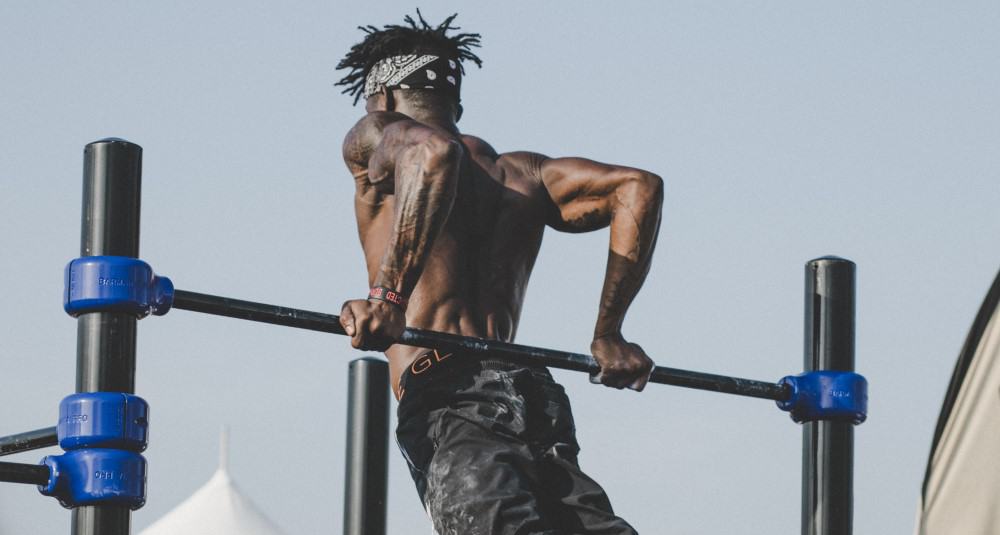
Exercise attributes
Having clarified which movements require which muscles, we now take a look at the characteristics of “good” exercises.
Because not all exercises that include, for example, a knee extension, are the same. Knee extension can occur on the leg extensor, leg press, during lunges,
That is why a qualitative assessment is very important:
1.) Measurability / constancy :
A good exercise has to leave little room for cheating. Because as you have hopefully noticed, progression is always the confirmation of a suitable training stimulus.
So if you do not record any progress over time, then you’re certainly doing something wrong. Maybe it’s simply the training stress or you don’t get enough regeneration from your training sessions. In any case, there is definitely a need for action.
However, if you stick to exercises with poor measurability, you usually can not judge whether you’ve gotten better or just cheated more. The result would be a “fake” progression, which then also reduces the training effect of the subsequent units since cheating reduces the load on the target muscle.
If you continue to grow, it can happen that you completely train past the target muscle.
For example, chest-supported back exercises are great for ensuring good measurability. Through constant contact with the chest pad, the falsification of the exercise can be reduced to a small degree.
This will give you much more accurate data to properly assess your progression.
2.) Stabilization
A good exercise should exhaust the target muscle and not make you a circus performer. Unless that’s exactly what your goal is.
If you are too concerned with stabilization, it can happen that small/invisible muscles become the limiting factor. Eventually, you’re needlessly giving away some potential because the exercise is terminated before the main muscle actually got exhausted.
Thus, stand off from exercises that unnecessarily demand your stabilization.
Don’t get me wrong, stabilization is great and indeed important, but however, only until a certain extent.
A squat on a ball doesn’t lead to enhanced outcomes than an even better squat on a ball.
This does not result in any advantages in other sports or every-day life situations as compared to when doing conventional squats.
The same reasoning applies to exercises that you haven’t mastered yet. If you have difficulties with “free” exercises, such as squats or deadlifts, I would advise you to implement guided exercises (machines
Although the following exercise has the same function (knee extension), you could gain an extra benefit by doing less stabilization.
3.) Fatigue Stimulus Coefficient
A good exercise will deplete your target muscle, but not your entire system.
For example, lateral lifting can easily irritate your middle shoulder muscle without significantly depleting the entire body. This allows you to perform a lot of volume without having to increase the overall training stress extremely.
Rack pulls, on the other hand, would be an exercise with extremely high exhaustion.
Once you have done this exercise, then you know exactly what I am talking about. After that, you usually feel like being hit by a truck.
Sure, no doubt, they also stimulate traps, the lower back, and your lat, but at what price?
In my opinion too high, which leaves us with two remaining options:
1.) Adapt the remaining part of your training around that certain exercise (rack pulls in this case).
This is suitable for athletes who are extremely convinced of a certain exercise and also want to prioritize a particular muscle group.
However, be aware that, because of limited regenerative capacities, your body can absorb significantly less volume in other exercises or muscle groups.
To put it simply, rack pulls demand your body so much that your performance in other exercises might suffer, which eventually leads to less accumulated volume.
2.) One simply selects other exercises with a better fatigue/stimu coefficient.
Nonetheless, that does not mean that you should solely design your training programme with isolation exercises, but that you have to think about the “price” of an exercise.
In order not to overrun your “regeneration budget” “more expensive” exercises should be carefully chosen and ideally include certain advantages.
For example, the greatest strain on the squat, compared to leg extension, arises in the stretched position and thus the muscle stimulus is of course also much higher.
In addition, the knee joint rather experiences pressure (squats) than shear forces (leg extensor), which can usually be better tolerated.
Thus we have 2 advantages, which we would like to take along despite the higher system exhaustion. As in real life, ultimately the cost-benefit ratio is decisive.
What’s it good for if your performance in other exercises suffers?
Of course, individual factors also play a major role.
For example, if you notice that despite clean technique/execution bench press always causes
Respectively, the cost-benefit ratio is not lucrative.
4.) Force / resistance curve
During a “good” exercise, the resistance curve is similar to the force curve of the working muscle.
What is a resistance curve?
A resistance curve describes the strength of the resistance at each point of the movement.
In other words, how the resistance changes while the exercise is executed.
A force curve describes the force of a muscle in every point of the movement. Among other things, at which point of the movement how much power is available to move a certain weight.
Example of a suboptimal exercise: Dumbbell flys
Since gravity only acts perpendicular to the ground, there is no resistance outwardly when the arms are perpendicular to the ground.
However, the chest needs precisely this “lateral” or “circular” resistance to be stressed at every point of movement. This ensures that the elbows can be brought together in front of the body.
The further the arms move outward, the stronger the resistance becomes, as the vertical component of the circular motion increases.
To truly understand this, you simply have to imagine that a circular motion, such as a “flying” one for the chest, can always be divided into two components:
A vertical and a horizontal component.
Ultimately, at the lowest point of the stretch, we work fully against gravity. As soon as we go up and start bringing our arms together, this resistance is significantly reduced and barely exists at the end of the movement.
Example of a “good” exercise: Machine flys
In contrast, here you have a constant resistance at each point of the movement and thus burden the chest over the entire movement.
Of course, these considerations can be applied to any other exercise. All you have to do is record the movement in your mind’s eye and ask yourself if you truly work against gravity.
If this is not the case then you should:
- Choose an exercise that will give you a better resistance curve
- Consider an additional exercise that can fill the “resistance gap”.
In our case, you would need an exercise that burdens your chest properly in respect of muscle contraction.
Finally, you should know that almost every isolation exercise can be depicted through circular movements.
In basic exercises, however, you usually work directly against gravity and can, therefore, rely solely on free weights.
Lastly, always remember: no exercise is magical.
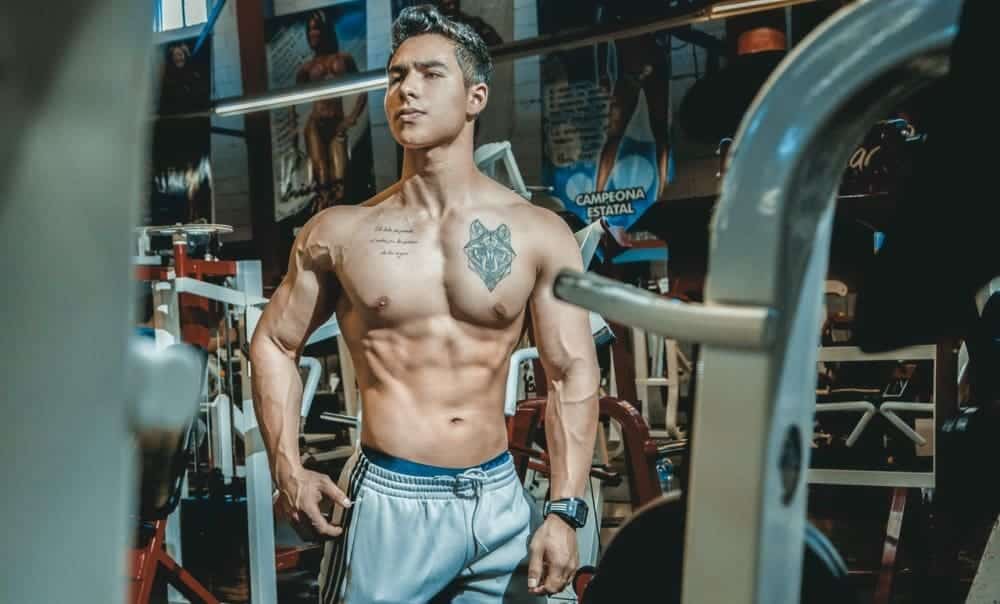
Exercise criteria
After we have clarified what qualities a good exercise must entail, we now discuss the criteria by which to choose your exercises.
1.) Goal
Your exercise selection should always be 100% goal oriented.
Do you want to become the strongest powerlifter of all time?
Then one thing is sure, which is that you have to integrate bench press, squats and deadlifts into
Are you a bodybuilder and have an incredibly strong chest?
Then you should not include 5 different chest exercises in your training. Each exercise must bring you closer to your personal goal, otherwise, you will burn calories extremely inefficiently.
2.) Injury / injury -prone
Some people simply cannot handle certain exercises, despite clean technique and a smart training plan. This can be due to previous injuries as well as to your genetics.
Unfavorable leverage, such as very long arms when bench pressing, ensure a relatively high load and can thus significantly increase the risk of injury.
Regardless, some athletes are genetically more susceptible to injury than others. After all, every human being is structurally somewhat differently built and has a different ability to regenerate with regard to the passive musculoskeletal system.
So if you notice that certain exercises do not feel adequate, then you should definitely stay away from them. Even if it was the best exercise in the world.
Optionally, you can also adopt such exercises to your personal needs (angle, arm’s reach
3.) Weak spots
If you have a very weak upper chest, then it may make sense to focus rather focus on incline bench press, which puts a lot of strain on this area, instead of conventional flat barbell bench press that.
The same applies to a bad symmetry. If you are just doing normal barbell press and your left chest is apparently a lot weaker than your right, switching to dumbbell bench press can make sense.
In this case, both pectoral muscles can be similarly loaded because no side can snatch more work because of the separate load.
4.) Fun / Motivation
Building muscle is a marathon and not a sprint.
For that reason, the enjoyment of training should always be first priority.
What advantage do you have doing the best exercises but quit exercising after 2 months?
What’s the point in having the best exercises if you train only half-heartedly?
For these reasons, you should definitely pay attention to maintain the enjoyment of training and choose your exercises accordingly.
Finally, one question has still to be answered.
Does it make sense to replace exercises every 6 weeks to ensure “muscle confusion”?
Not at all, because by exchanging the exercise it takes a lot of time again until you have mastered the technique and so being able to efficiently stress the target muscle.
In this practice session, the effect of the exercise on muscle or strength is weakened. Rather, you should choose your exercises according to the above criteria and perfect the exercise execution. That’s the only way you can maximize volume and get the most out of it.
If your personal framework (goals, motivation, etc.) should change, then, of course, the change would make perfect sense. Because if your goal changes, it needs to be the ideal way.
Take home
At the end of the day, there are many variables that come to play when searching for your best exercises.
Individual goals, your genetical predispositions (
Over time, you’re going to make progress. Maybe your goals also change. If that is the case, make sure to overthink your exercise selection and assess whether adjustments are needed or not.
Lastly and most importantly, never ever neglect fun with each and every exercise. If one exercise does not suit your personal preference then just drop it and chose a different one. This could increase the likelihood of you getting bored and eventually, in the worst case, quit exercising.
Remember the beneath key notes about exercise selection for muscle growth.
- No exercise is magical
- Remember the characteristics of “good” exercises
- Choose your exercises based on the exercise criteria
- The body functions can help you locate involved muscles
How do you select your exercises? Do you have a particular procedure for that?
Leave a comment below and engage with us!
Thanks for the read,
Claas

